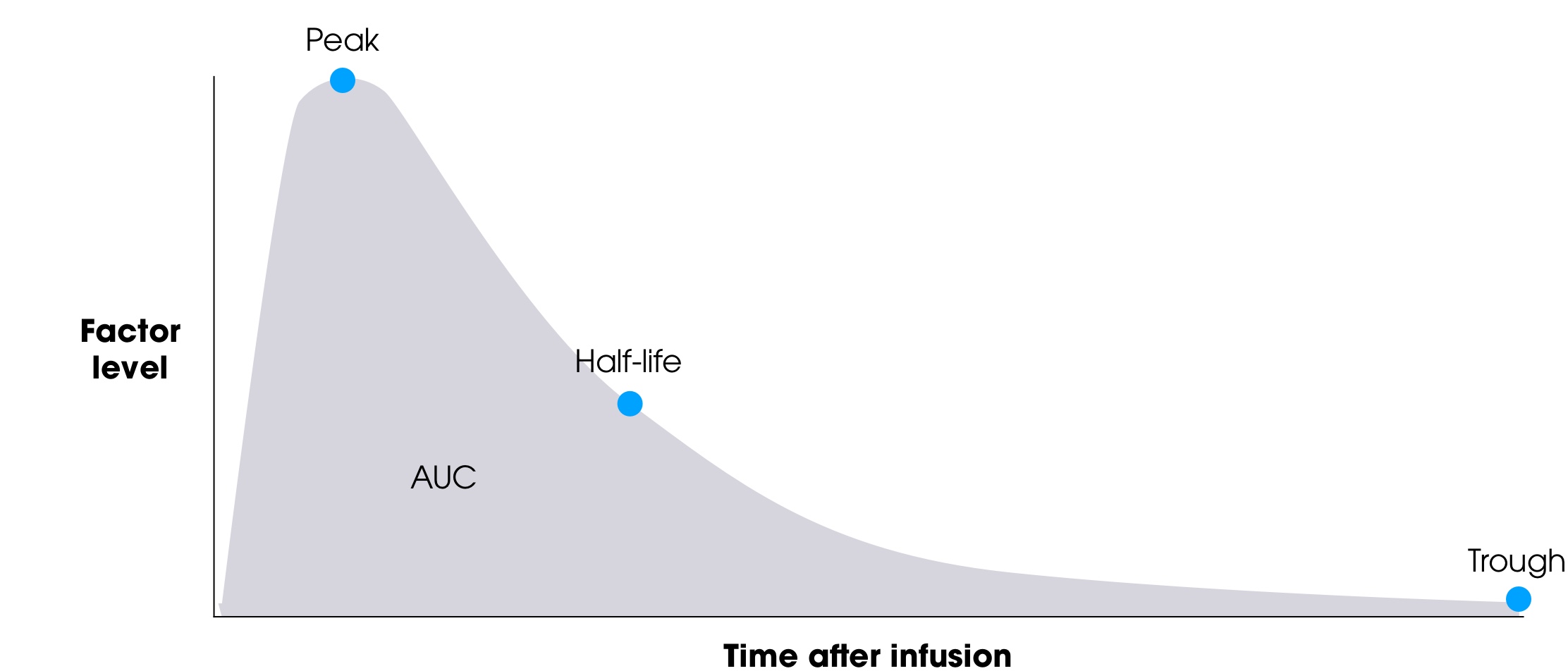Understanding factor activity.
Pharmacokinetics (pharmacology + kinetics), or PK, is the study of how drugs move in the body. Your unique PK parameters can help doctors evaluate factor activity levels in your body, which can help make sure your hemophilia treatment and management plan is working for you. Learn more in our guide.
Factor activity and severity
People without hemophilia naturally have factor activity levels above 40%, and people with hemophilia have factor activity levels below 40%. The exact percentage of factor activity determines hemophilia severity.
Mild
<5% to <40% factor
activity*†
Bleeding can occur from injury or surgery
Spontaneous bleeding is rare
Moderate
<1% to 5% factor activity*†
Bleeding can occur from injury or surgery
Spontaneous bleeding is possible
Severe
<1% factor activity*†
Bleeding likely from injury
or surgery
Spontaneous bleeding is frequent—often into joints and muscles
*Severity classifications may be different for women with hemophilia
†Factor levels may not
reflect bleeding patterns
The elements of a PK profile
PK testing can help inform the treatment regimens doctors recommend. The PK curve below illustrates how factor activity changes over time after an infusion and highlights the key parameters doctors may evaluate.

Peak
Factor activity levels are the highest in the body right after an infusion. This is called the peak.
Area under the curve (AUC)
Represents the amount of factor in your body over time.
Clearance
The speed at which factor is eliminated from the body (not shown on graph).
Half-life
The amount of time it takes for factor level to go down by 50% after an infusion. The longer the half-life of your factor is, the longer it will stay in your body to protect you from bleeds.
Trough
The lowest level of factor activity right before the next dose is called the trough level.
Volume of distribution (VOD)
A measure of how much factor is in the blood and in other tissues in the body (not shown on graph).







